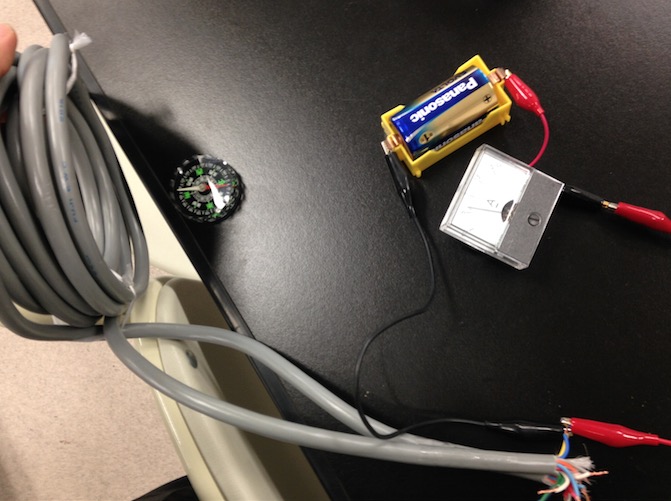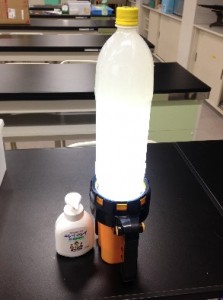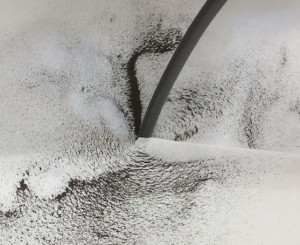Pascal’s Power Coil: Turn One Wire into a 200-Turn Electromagnet! (And Make It Safe!)
Hello! I’m Kuwako Ken, your Science Trainer. Every day is an experiment!
It looks like just a single electrical cable. But what if that one wire secretly held the power of ten wires? Doesn’t that sound exciting? The “Pascal Cable” I introduced recently is exactly that kind of magical item. A single tube bundles 10 conductors, and when electricity flows, it unleashes 10 times the usual power. It truly is a powerful wire that lives up to its name!
(The wire that can be used to create the Pascal Cable, such as Fujidenkogyo VCTF 0.3sq x 10 Core, can be purchased on Amazon.)
🧪 An Experiment to Condense 10x Power
So, I took this “10x Power” Pascal Cable (1 meter long) and used it to create an even more powerful device. What I did was very simple: I just coiled the wire up into a homemade electromagnet.

Recall the principle of electromagnets and motors: a coil becomes a stronger magnet the more times it is wound, and the stronger the current that passes through it. For this experiment, I wound the Pascal Cable about 20 times and secured it. It looks like only 20 turns. However, the Pascal Cable is actually a bundle of “10 conductors.” So, what is its true winding power?
That’s right! 20 turns x 10 wires = 200 equivalent turns!
With this simple step, we created a powerful coil without the tedious effort of winding 200 turns of thin copper wire!
✨ Conjuring the Magic of “Electricity” and “Magnetism”
What can we do with this “200-Turn Equivalent Coil”? This one setup clearly demonstrates the fascinating relationship between the two main characters of science: electricity and magnetism.
First, try moving a magnet in and out of the coil without connecting a battery. Just doing this allows you to observe “Electromagnetic Induction,” or “generating electricity.” The “change in magnetism” inside the coil “creates electricity.” The lights on a bicycle or large power plants also use this very principle.
Next, let’s connect a single D-cell battery to the coil. Now, the coil transforms into a powerful “electromagnet”!
What happens when you bring a compass close to it?

Look at that! The compass needle reacts strongly and visibly! This is proof that even just one battery, combined with the 200-turn power, generates a strong magnetic field.
💡 A “Smart” Short Circuit for Safe Experiments?
If you noticed something here, you have a sharp sense for science. You might be asking, “Isn’t connecting a wire directly to a battery a ‘short circuit’? Isn’t that dangerous?” You are absolutely correct; normally, it would be dangerous. However, when we measure the current in this setup, it’s about 0.6A (Amperes). This is safe to handle even with a D-cell battery. Why isn’t a large current flowing?
The secret lies in the “length of the wire.” Wires have “electrical resistance,” which hinders the flow of current. The Pascal Cable we used is 1 meter long, but it contains 10 separate conductors. Furthermore, we wound it 20 times, making the path the electricity travels very long. The longer the path, the greater the resistance becomes, and the smaller (and safer) the current flow.
This device cleverly utilizes the wire’s inherent “resistance” to prevent a large current from flowing, even though it’s technically a short circuit. That’s why the wire doesn’t heat up, even when connected for a long time. This means it’s easy to prepare one for each student group in a classroom, allowing students to safely experience a “real electromagnet.” Why not create your own “10x Power” coil at home and experience the wonder of electricity and magnetism?
Wire suitable for making a Pascal Cable: Fujidenkogyo VCTF 0.3sq x 10 Core
📞 Contact and Requests
Bring the wonders and fun of science closer to you! I compile easy-to-understand fun science experiments you can do at home, along with tips and tricks. Feel free to search around!
The content from Science Notes is now available as a book. Learn more here.
About the operator, Kuwako Ken: click here.
For various requests (writing, lectures, experiment classes, TV supervision/appearances, etc.): click here. * Article updates are shared on X!
![]() Experiment videos are available on Science Notes Channel!
Experiment videos are available on Science Notes Channel!


